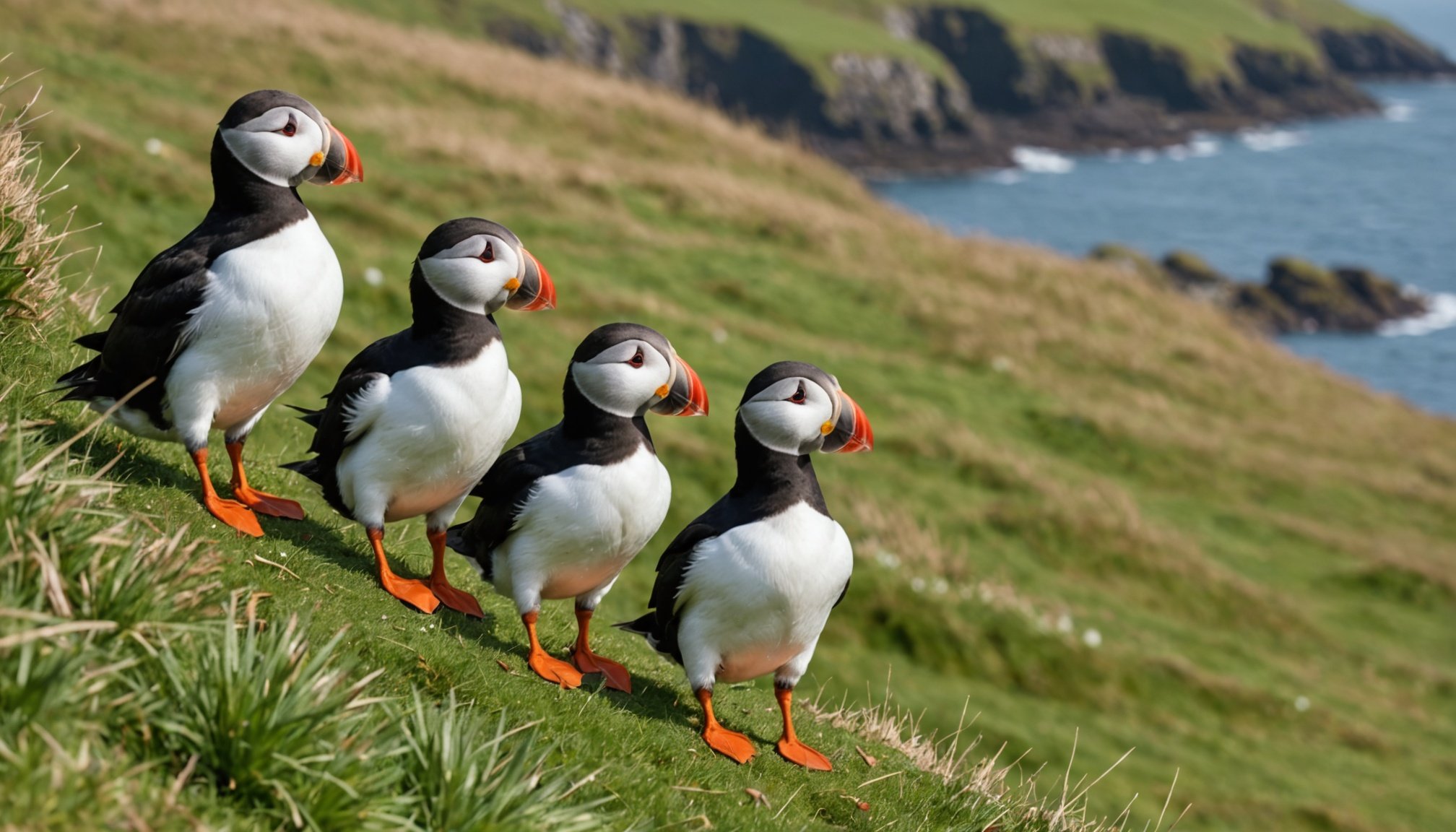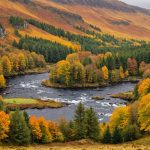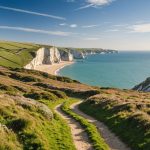Unforgettable Puffin Watching: Discover the Best UK Spots for Spectacular Avian Adventures
If you’re a bird enthusiast or simply someone who appreciates the natural beauty of the United Kingdom, puffin watching is an experience you won’t want to miss. These charming birds, with their distinctive black and white feathers and brightly colored beaks, are a delight to observe. Here’s a guide to the best UK spots for puffin watching, ensuring you make the most of your avian adventure.
Why Puffins are a Must-See
Puffins are one of the UK’s most beloved bird species, and for good reason. Their colorful appearance, unique burrowing habits, and endearing personalities make them a star attraction in any wildlife setting. Here’s what makes puffins so special:
In parallel : Unveiling the best uk destinations for awe-inspiring georgian architecture experiences
- Unique Appearance: Puffins are known for their black and white feathers and their brightly colored beaks, which are particularly vibrant during the breeding season.
- Monogamous Mates: Puffins are known to mate for life, often returning to the same burrow year after year.
- Endangered Status: Puffins are listed as endangered on the IUCN Red List, making conservation efforts and responsible bird watching crucial[1].
Best Spots for Puffin Watching in the UK
The UK is home to several fantastic locations for puffin watching, each offering a unique experience.
Bempton Cliffs, North Yorkshire
Bempton Cliffs, part of the RSPB Bempton Cliffs Nature Reserve, is the only mainland location in the UK where you can see puffins. Here’s what makes it special:
Additional reading : Unearth york”s medieval treasures: the definitive guide to immersive walking tours
- Seasonal Sightings: Puffins can be seen at Bempton Cliffs from late April to early August, with peak sightings between May and July[1].
- Observation Platforms: The reserve features six wooden platforms from which you can observe puffins and other seabirds. The Grandstand platform is just a 5-minute walk from the car park, while others may take up to 2 hours to reach[1].
- Additional Wildlife: Besides puffins, you can spot other seabirds, harbour seals, butterflies, hares, and deer along the cliff-top coastal path and nature trails[1].
Skomer Island, Wales
Skomer Island, off the coast of Wales, is renowned for its puffin colonies and offers a unique birding experience.
- Photography Opportunities: Skomer Island is a photographer’s paradise, especially during the height of chick-feeding season when puffins can be seen with beaks full of fish[2].
- Access and Tours: To visit Skomer Island, you need to take a boat trip. These tours often include guided walks around the island, allowing you to get up close to the puffin burrows[2].
- Other Bird Species: Skomer Island is home to a variety of other bird species, including guillemots, razorbills, and gulls[2].
Farne Islands, Northumberland
The Farne Islands, located off the Northumberland coast, are another prime spot for puffin watching.
- Large Colonies: The Farne Islands host one of the largest puffin colonies in the UK, with around 37,000 birds flocking to the islands each year[3].
- Boat Tours: Boat tours from Seahouses harbour, such as those offered by the Golden Gate boat company, allow you to cruise around the islands and even land on Longstone Island[3].
- Historical Significance: The Farne Islands are also historically significant, with Longstone Lighthouse being the former home of Grace Darling, a young heroine who saved shipwreck survivors in 1838[3].
Lunga Island, Scotland
Lunga Island, part of the Treshnish Isles in Scotland, offers one of the most intimate puffin watching experiences.
- Up-Close Encounters: On Lunga Island, you can walk right by the puffin burrows, allowing for incredibly close and personal encounters with these birds[5].
- Other Marine Life: The island is also home to a variety of other marine life, including guillemots, razorbills, and shags. The surrounding waters are perfect for spotting shearwaters, petrels, and even cetaceans[5].
- Scenic Beauty: The island’s scenic beauty, with its rugged cliffs and pristine beaches, adds to the overall experience of visiting Lunga Island[5].
Planning Your Puffin Watching Trip
To make the most of your puffin watching adventure, here are some practical tips and insights:
Best Time to Visit
The best time to see puffins varies slightly by location but generally falls within the summer months:
- Bempton Cliffs: Late April to early August, with peak sightings between May and July[1].
- Skomer Island: May to July for the best photography opportunities during chick-feeding season[2].
- Farne Islands: May to July, with boat tours available from April to October[3].
- Lunga Island: June to August for the best puffin sightings[5].
Preparing for Your Trip
Here are some things to consider when planning your trip:
- Clothing: Wear comfortable walking shoes and layers, as the weather can be unpredictable.
- Binoculars: Bring binoculars to get a closer look at the birds without disturbing them.
- Camera: If you’re a photographer, bring a camera with a good zoom lens to capture those perfect shots.
- Guided Tours: Opt for guided tours to get the most out of your visit and to ensure you’re respecting the birds’ habitats.
Additional Tips and Insights
Here are some additional tips to enhance your puffin watching experience:
Respect the Birds
- Keep Distance: Always keep a safe distance from the birds to avoid disturbing them.
- No Littering: Ensure you leave no litter behind, as this can harm the birds and other wildlife.
- Follow Guidelines: Follow any guidelines or rules provided by the nature reserves or tour guides.
Combining with Other Activities
Puffin watching can be part of a larger wildlife and nature adventure. Here are some other activities you might enjoy:
- Nature Trails: Many of the locations have nature trails that allow you to explore other aspects of the local wildlife, such as butterflies, hares, and deer[1].
- Boat Trips: Boat trips around the islands can also offer sightings of other marine life, including seals, dolphins, and various bird species[3][5].
- Historical Sites: Visiting historical sites like Longstone Lighthouse on the Farne Islands can add a rich cultural dimension to your trip[3].
Comparative Table of Puffin Watching Locations
Here is a comparative table to help you decide which location best suits your preferences:
| Location | Best Time to Visit | Unique Features | Additional Wildlife |
|---|---|---|---|
| Bempton Cliffs | Late April to early August | Only mainland UK location, six observation platforms | Harbour seals, butterflies, hares, deer |
| Skomer Island | May to July | Photography opportunities during chick-feeding season | Guillemots, razorbills, gulls |
| Farne Islands | May to July | Large colonies, historical significance of Longstone Lighthouse | Atlantic grey seals, guillemots, gulls |
| Lunga Island | June to August | Up-close encounters with puffins, scenic beauty | Guillemots, razorbills, shags, shearwaters, petrels |
Quotes from Enthusiasts
Here are some quotes from bird enthusiasts and tour guides that highlight the excitement and beauty of puffin watching:
- “Summer isn’t summer without a boat trip to see the puffins on the Farne Islands. It’s a spectacle that never gets old,” says a local bird watcher[3].
- “The experience of walking right by the puffin burrows on Lunga Island is truly unforgettable. It’s like having a front-row seat to their natural habitat,” notes a tour guide[5].
- “Bempton Cliffs offers a unique opportunity to see puffins in their natural habitat without the need for a boat trip. It’s a great spot for families and beginners,” says an RSPB volunteer[1].
Puffin watching in the UK is an adventure that promises unforgettable moments of natural beauty and wildlife wonder. Whether you choose Bempton Cliffs, Skomer Island, the Farne Islands, or Lunga Island, each location offers a unique and enriching experience. By planning your trip carefully, respecting the birds’ habitats, and combining your visit with other activities, you can make the most of your time and create lasting memories.
So pack your binoculars, grab your camera, and get ready for an avian adventure that will leave you in awe of these charming birds and the stunning landscapes they call home.











